
The intermediate horseshoe bat is a bat species of the family Rhinolophidae that is very widespread throughout much of the Indian subcontinent, southern and central China and Southeast Asia. It is listed by IUCN as Least Concern as it is considered common where it occurs, without any known major threats.

The Cape horseshoe bat is a species of bat in the family Rhinolophidae. It is endemic to South Africa, and is potentially threatened by habitat loss and disturbance of its roosting sites, although it is present in large enough numbers to be considered of least concern by the IUCN.
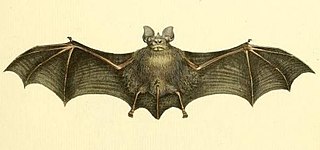
Geoffroy's horseshoe bat is a species of bat in the family Rhinolophidae found in Africa. Its natural habitats are subtropical or tropical moist lowland forest, Mediterranean-type shrubby vegetation, caves and other subterranean habitats, and hot deserts.

The Andaman horseshoe bat is a species of bat in the family Rhinolophidae. It is endemic to the Andaman Islands. During the day, it roosts in caves, but may also choose tree hollows.

The convex horseshoe bat is a species of bat in the family Rhinolophidae. It is found in Malaysia and Laos.

The Mediterranean horseshoe bat is a species of insectivorous bat in the family Rhinolophidae. It is found in the Mediterranean region and Balkan peninsula, as well as parts of Italy.
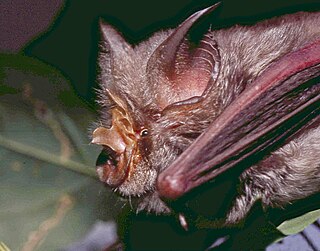
Rüppell's horseshoe bat is a species of bat in the family Rhinolophidae found in Africa. Its natural habitats are subtropical or tropical dry forests, savanna, caves and other subterranean habitats. This species is quite common in parts of its range, and no specific threats have been recognised, so the International Union for Conservation of Nature has rated its conservation status as being of "least concern".

The Guinean horseshoe bat is a species of bat in the family Rhinolophidae. It is found in Ivory Coast, Guinea, Liberia, Senegal, and Sierra Leone. Its natural habitats are subtropical and tropical forests, moist savanna, caves, and other subterranean habitats.
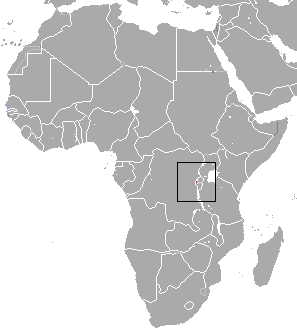
Rhinolophus hilli, Hill's horseshoe bat, is a species of bat in the family Rhinolophidae. It is endemic to Rwanda. Its natural habitats are subtropical or tropical moist montane forests, caves, and subterranean habitats. In 2013, Bat Conservation International listed this species as one of the 35 species of its worldwide priority list of conservation. It is threatened by habitat loss.
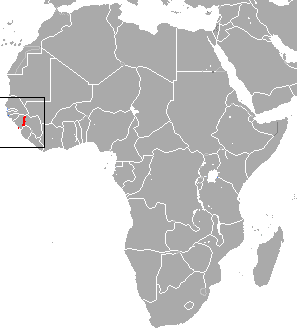
Maclaud's horseshoe bat is a species of bat in the family Rhinolophidae. It is endemic to Guinea. Its natural habitats are moist savanna, caves and other subterranean habitats. It is one of five African microbat species to be listed as endangered by the IUCN. In 2013, Bat Conservation International listed this species as one of the 35 species of its worldwide priority list of conservation. It is threatened by habitat loss.

The big-eared horseshoe bat is a bat species within the Rhinolophidae native to Asia.
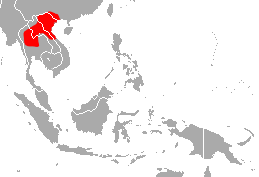
Bourret's horseshoe bat is a species of horseshoe bat native to Southeast Asia. The name "paradoxolophus" is derived from the Greek words paradoxos, meaning "contrary to expectation", and lophos, meaning "crest". This name refers to the bat's difference in nose-leaf morphology compared to other Rhinolophus species. There are no recognised subspecies.

The Chinese rufous horseshoe bat is a species of bat in the family Rhinolophidae. It is found in Bhutan, China, India, Nepal, and Vietnam.

The Ziama horseshoe bat is a species of bat in the family Rhinolophidae. It was first described in 2002. It is found in Guinea, Sierra Leone, and Liberia. Its natural habitats are subtropical and tropical moist lowland and monstane forests. In 2013, Bat Conservation International listed this species as one of the 35 species of its worldwide priority list of conservation.

The Thai horseshoe bat, sometimes called the Thai leaf-nosed bat, is a species of bat from the family Rhinolophidae. It is frequently listed as a subspecies of the Big-eared horseshoe bat, but this may be a result of the two species being taken in sympatry in Laos. It is native to China, Laos, Thailand, and Vietnam.
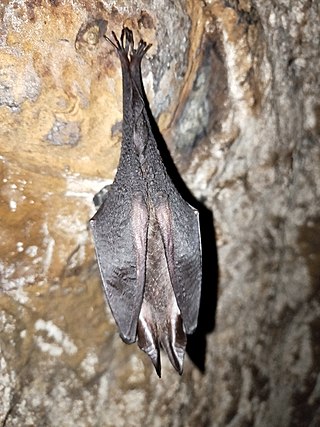
The Formosan woolly horseshoe bat is a species of bat from the family Rhinolophidae. It is endemic to Taiwan and occurs in primary forests in low to middle altitudes of central areas of Taiwan. Its roosting locations include caves, buildings, tunnels, and irrigation conduits. The species is listed as Least concern by the IUCN Red List, and it almost qualifies as a threatened species under criteria B1: extent of occurrence for geographic range. Its population is decreasing due to deforestation in Taiwanese lowlands, although it occurs in at least one protected area. The Formosan woolly horseshoe bat was formerly considered to be a subspecies of the woolly horseshoe bat, but is distinct.
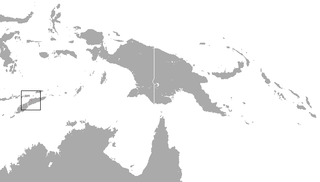
The Timorese horseshoe bat is a species of bat native to Timor-Leste.
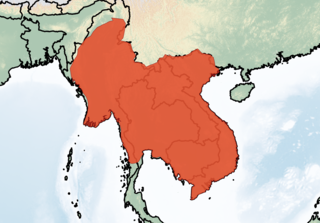
Rhinolophus microglobosus is a species of horseshoe bat found in Southeast Asia.
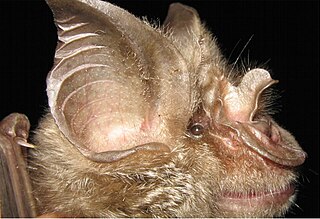
The Mozambican horseshoe bat is a species of horseshoe bat found in Africa.
The Mount Mabu horseshoe bat is a species of horseshoe bat that is endemic to the Southeast African nation of Mozambique.



















